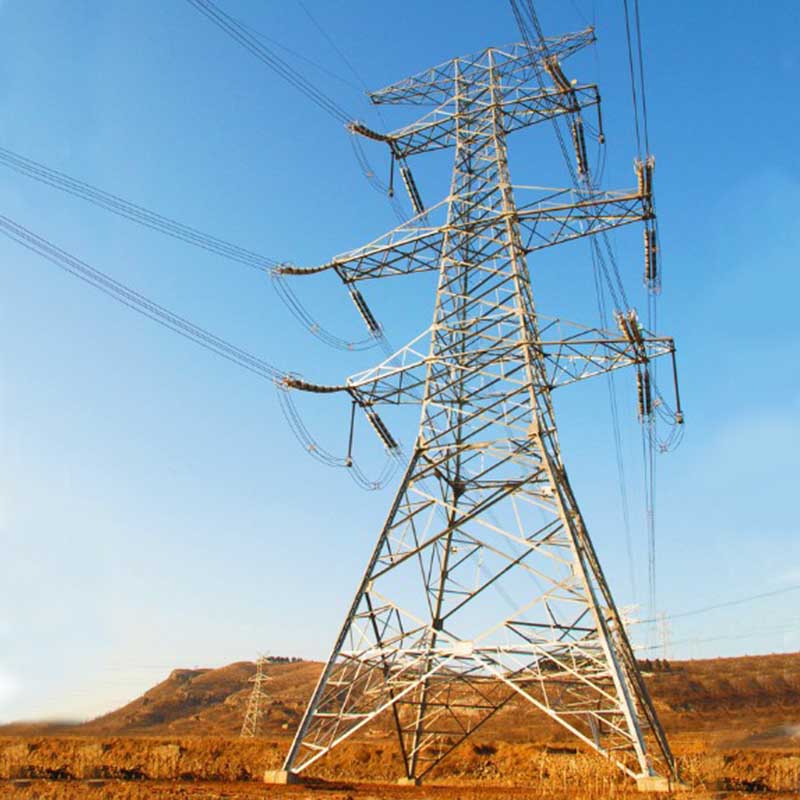Exploring the Pros and Cons: Galvanized Steel Structure Power Towers vs. Alternative Materials
2024-04-10
In the realm of power transmission infrastructure, the choice of tower materials plays a pivotal role in determining the efficiency, reliability, and longevity of the system. While Galvanized Steel Structure Power Towers have long been the cornerstone of such installations, alternative materials like concrete and aluminum offer compelling alternatives. Understanding the trade-offs between these materials is crucial for engineers and policymakers seeking to optimize the performance and cost-effectiveness of power transmission networks.
Cost-Effectiveness: Balancing Upfront Investment and Long-Term Savings
When evaluating the cost-effectiveness of power tower materials, it's essential to consider both the upfront investment and the total lifecycle cost. Galvanized steel towers often offer a favorable balance between initial affordability and long-term durability. While the upfront cost of steel may be higher than alternatives like concrete, its superior strength-to-weight ratio allows for the construction of taller, more slender towers, reducing the overall quantity of material required.
Concrete towers, on the other hand, boast lower material costs but may incur higher expenses during construction due to their bulkier nature and specialized construction techniques. Additionally, factors such as transportation and installation logistics can influence the overall cost of concrete tower projects
Aluminum towers present a unique cost profile, characterized by higher material costs offset by potential savings in transportation, installation, and maintenance. Although aluminum is lighter than steel, offering advantages in terms of ease of handling and reduced foundation requirements, its higher material cost may deter widespread adoption in certain applications.
Performance: Strength, Resilience, and Environmental Factors
In terms of performance, each material offers distinct advantages and considerations. Galvanized steel towers excel in strength, resilience, and adaptability to diverse environmental conditions. The hot-dipped galvanization process provides superior corrosion resistance, ensuring longevity even in harsh climates or corrosive environments. Moreover, steel towers offer flexibility in design, allowing for efficient customization to accommodate varying terrain and loading requirements.
Concrete towers, while generally robust and resistant to environmental degradation, may face challenges related to transportation, installation complexity, and maintenance. However, their inherent mass and stability make them well-suited for applications requiring heightened resistance to seismic activity or extreme weather conditions.
Aluminum towers are prized for their lightweight nature and corrosion resistance, making them particularly suitable for coastal or highly corrosive environments. However, aluminum's lower tensile strength compared to steel may necessitate thicker profiles or additional reinforcement to achieve comparable structural performance, potentially impacting cost and design complexity.
Longevity: Durability and Maintenance Considerations
Longevity is a critical consideration in the selection of power tower materials, as the cost of maintenance and replacement can significantly impact the lifecycle cost of the infrastructure. Galvanized steel towers are renowned for their exceptional durability, with properly maintained structures exhibiting decades-long service lives. Routine inspection and maintenance, including periodic recoating of zinc and addressing any signs of corrosion, can further extend the lifespan of steel towers.
Concrete towers offer similar longevity when properly designed and constructed, with minimal maintenance requirements over their operational lifespan. However, factors such as exposure to freeze-thaw cycles, chemical degradation, and structural fatigue may necessitate periodic inspections and repairs to ensure continued reliability.
Aluminum towers, while inherently corrosion-resistant, may require proactive maintenance measures to mitigate the risk of galvanic corrosion when in contact with dissimilar metals or subjected to harsh environmental conditions. Additionally, aluminum's susceptibility to fatigue and stress corrosion cracking may necessitate more frequent inspections and structural assessments to ensure safe operation over time.
In Conclusion: Selecting the Right Material for the Job
In the dynamic landscape of power transmission infrastructure, the choice of tower materials involves careful consideration of cost-effectiveness, performance, and longevity. While Galvanized Steel Structure Power Towers remain a staple of the industry, alternative materials such as concrete and aluminum offer compelling alternatives, each with its own set of advantages and trade-offs. By weighing these factors against project-specific requirements and environmental considerations, engineers and stakeholders can make informed decisions that optimize the reliability, efficiency, and sustainability of power transmission networks for years to come.



